Physical Address
304 North Cardinal St.
Dorchester Center, MA 02124
Physical Address
304 North Cardinal St.
Dorchester Center, MA 02124
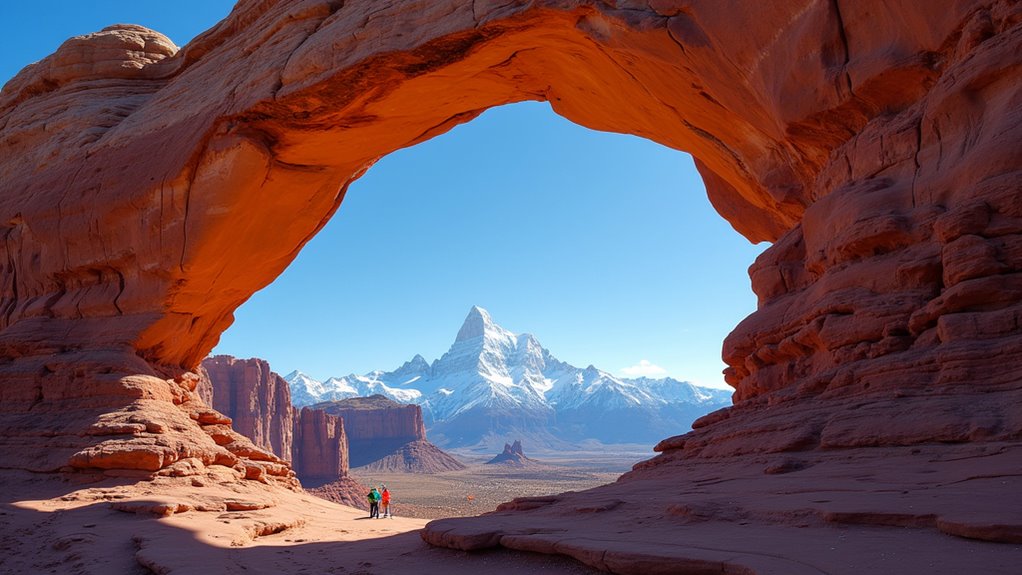
From ancient arches to secret movie sets, Moab's red rock wonderland holds fascinating stories that will surprise even seasoned travelers.
Picture yourself standing among towering red rock formations that glow like embers at sunset – you’re in Moab, Utah’s adventure capital. You’ll find more natural stone arches here than anywhere else on Earth, with over 2,000 documented formations scattered across the landscape. While most visitors know about the region’s popular hiking trails and biking routes, Moab’s story goes deeper, from its ancient geological origins to its surprising role in Hollywood’s biggest blockbusters.
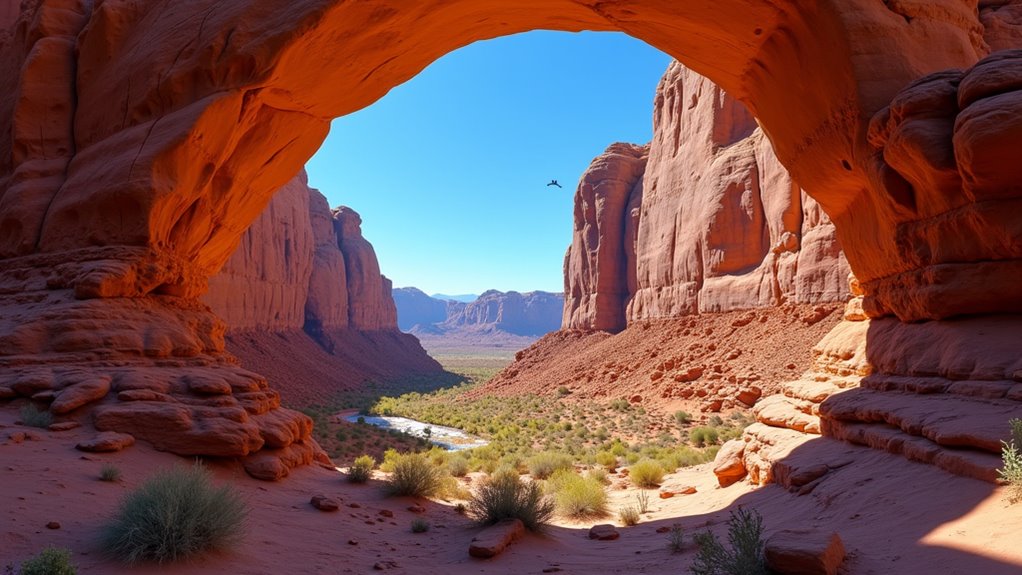
While Moab’s striking red rock landscape captivates visitors today, its formation spans millions of years of complex geological processes.
Research by geologist James Mauch revealed that the Moab Valley formed just 1.5 million years ago.
You’ll find over 2,000 natural arches in the area, representing the highest concentration of such formations worldwide. The region’s sandstone features have been sculpted by continuous erosion, creating dramatic canyons, cliffs, and pinnacles.
Moab’s remarkable landscape boasts thousands of sandstone arches, shaped by endless erosion into nature’s most spectacular gallery.
The landscape you see is relatively young, changing at about 0.04 inches annually in the valley center. The Moab fault, with its impressive 2,400-foot displacement, has played a significant role in shaping the terrain.
You’re standing on layers of Mesozoic rock that range from 4,000 to 8,000 feet thick, including distinctive formations like the Jurassic Entrada Sandstone and the Curtis Formation’s Moab Member.
Many visitors choose to explore these geological wonders while staying at RV resorts that offer direct access to the stunning landscapes.
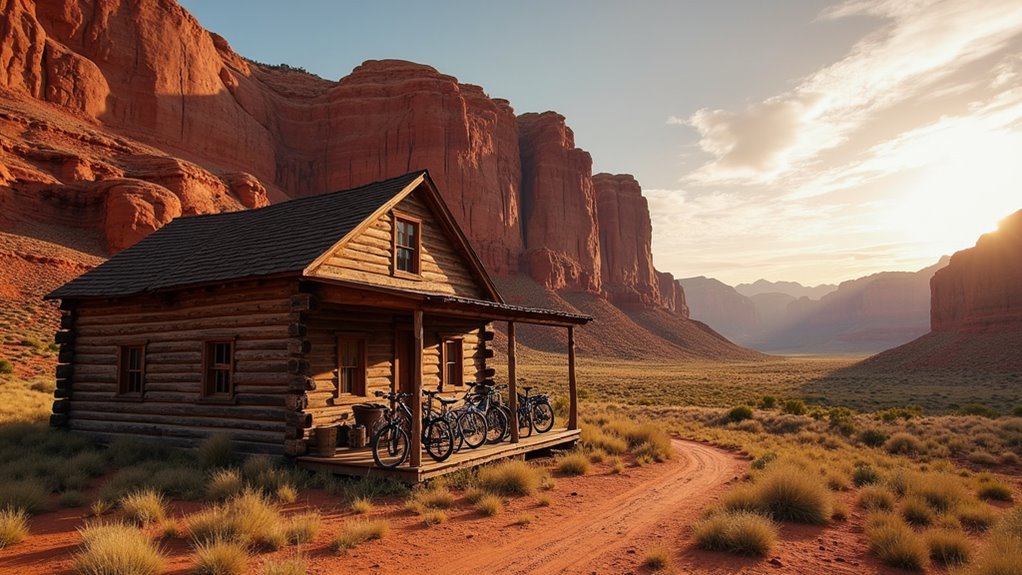
Long before Moab became a mecca for outdoor enthusiasts, Juan Maria Antonio de Rivera led the first recorded European expedition to the area in 1765.
You’ll find it fascinating how this remote location transformed from a simple river crossing used by fur trappers to today’s adventure destination.
The Church of Jesus Christ sent 41 men to establish this initial settlement near the Colorado River, marking their first attempt to colonize the area.
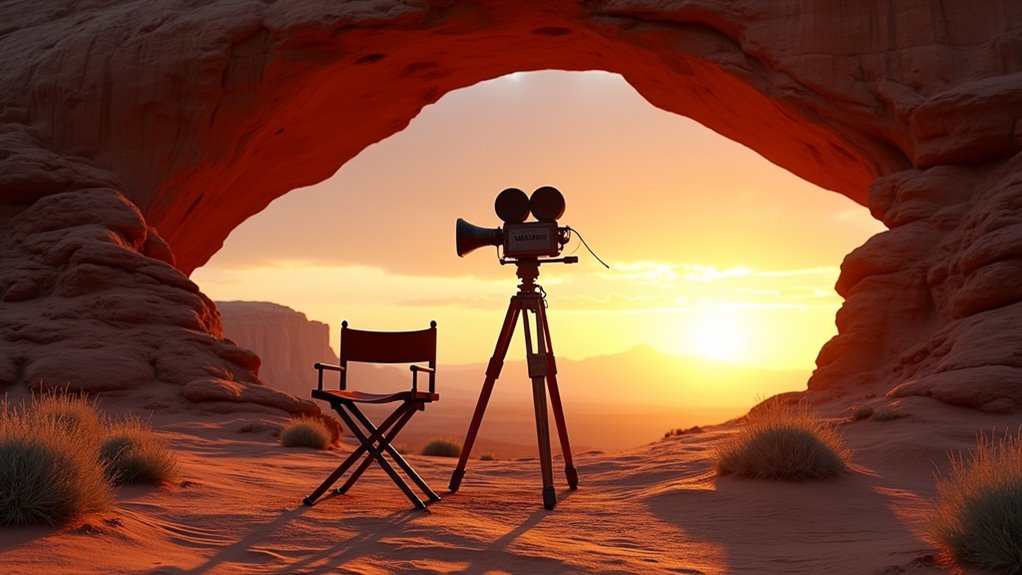
Moab’s stunning red rock landscapes didn’t just captivate outdoor adventurers – they also caught Hollywood’s eye. It all started in 1949 when George White convinced director John Ford to film “Wagonmaster” in the area. Ford and John Wayne’s enthusiasm for Moab’s scenery helped establish it as a prime filming location.
You’ll recognize Moab’s dramatic terrain in countless productions, from Indiana Jones to Thelma and Louise. Dead Horse Point State Park, Arches National Park, and various local ranches have served as backdrops for over 2,000 films, TV shows, and commercials. The area’s diverse natural environments, from sand deserts to snowy mountains, give filmmakers endless creative possibilities.
The film industry brought significant economic benefits to the region, especially from the 1940s through the 1970s. Today, movies like Kevin Costner’s “Horizon: An American Saga” continue to showcase Moab’s cinematic appeal.

For adrenaline junkies and outdoor enthusiasts, few destinations rival the recreational wonderland of Moab. Recently recognized as the sixth most welcoming city worldwide by Booking.com, Moab continues to charm visitors with its hospitality and adventure offerings.
You’ll find world-class mountain biking on the famous Slickrock Trail, where over 100,000 riders test their skills annually. The area’s diverse terrain offers endless opportunities for adventure, with activities ranging from heart-pumping rock climbing to exhilarating river rafting on the Colorado River. Families can enjoy free hiking trails throughout the region’s stunning landscapes.
Whether you’re scaling red rock formations, maneuvering through challenging bike trails, or exploring hidden canyons, Moab’s natural playground delivers unforgettable thrills in a breathtaking desert setting.
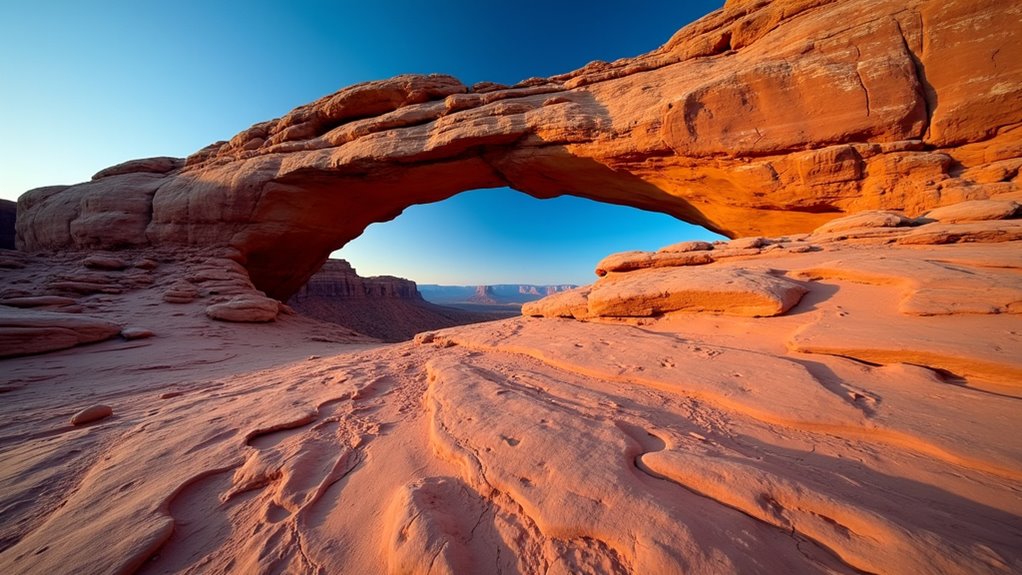
Due to its unique geological features and diverse ecosystems, Moab has become a significant hub for scientific research and discovery.
You’ll find scientists studying everything from the iconic arches that serve as natural laboratories for erosion processes to the impacts of climate change on local ecosystems at the Canyonlands Research Center.
The area’s rich cultural heritage also draws researchers who study ancient petroglyphs and artifacts to understand Native American history and human-environment interactions. Their valuable work includes the biocrust restoration experiments that help prevent soil erosion and maintain ecosystem health.
You can see their work preserving the stories of the Old Spanish Trail and indigenous connections to the land.
Scientists are actively working to restore creek corridors and monitor water quality in the Colorado River watershed.
They’re also tracking how tourism, historical uranium mining, and current development affect the region’s delicate environmental balance.
Whether you’re chasing Indiana Jones’s adventures, following Thelma and Louise’s tracks, or blazing your own trail, Moab’s red rock wonderland won’t disappoint. You’ll find yourself among ancient arches that’d make Roman engineering look young, trails that’ll test your mettle like a modern-day Wild West challenge, and scenery that’s inspired thousands of storytellers. Moab isn’t just a destination—it’s nature’s greatest stage for your next adventure.